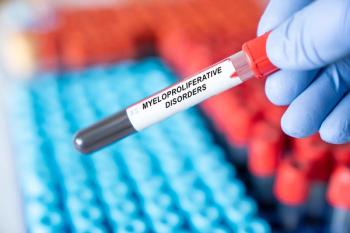
OCT Easier on Infants Than Typical US Method in Determining ROP, Study Says
Optical coherence tomography (OCT) appears to be less stressful to preterm infants than ocular indirect ophthalmoscopy (BIO) in assessing retinopathy of prematurity (ROP).
Although the imaging’s role in assessing retinopathy of prematurity (ROP) is yet to be determined, optical coherence tomography (OCT) appears to be less stressful to preterm infants than the widely used ocular indirect ophthalmoscopy (BIO), according to a new study.
A study involving 71
Change in respiratory rate and oxygen saturation did not differ between OCT imaging and BIO, according to the study.
Currently, OCT is not available or used in most intensive care nurseries the United States or worldwide.
Approximately 70,000 infants per year in the United States undergo 1 or more BIO examinations for ROP screening, according to the authors. Generally, examination by a trained ophthalmologist entails placement of an eyelid speculum, mydriatic drops, retinal illumination by the bright light of a binocular indirect ophthalmoscope, and pressure to the outer surface of the eye. However, BIO is known to cause stress and pain for the baby and can produce changes in heart rate, high or low heart rate, and apnea during and after examination.
Furthermore, while use of comfort measures such as swaddling, the use of pacifiers, and sucrose have been recommended for minor procedural pain related to BIO, an earlier study found stress levels did not go down, the authors said.
Ophthalmologists have used oral sucrose and intranasal fentanyl to reduce pain, but safety and efficacy have yet to be verified, according to the authors. Retinal imaging with a fundus, noncontact camera has been used along with BIO and is considered safer; however, it is associated with low heart rate and apnea during and after imaging. The bright light is still a stressor as well.
Handheld OCT provides imaging of retinal vasculature and substructure that gives a novel visualization of ROP and cell layer changes during retinal development and ROP. It does not require bright visible light, using invisible near-infrared illumination. It also can be performed without pupil dilation, although dilation facilitates peripheral retinal imaging.
The authors called for further validation of their findings and potentially a large trial through collaboration of ophthalmologists and neonatologists.
Reference
Mangalesh S, Sarin N, McGeehan B, et al. Preterm Infant stress during handheld optical coherence tomography vs binocular indirect ophthalmoscopy examination for retinopathy of prematurity. JAMA Ophthalmol. Published online April 1, 2021. doi:10.1001/jamaophthalmol.2021.0377
Newsletter
Stay ahead of policy, cost, and value—subscribe to AJMC for expert insights at the intersection of clinical care and health economics.













































